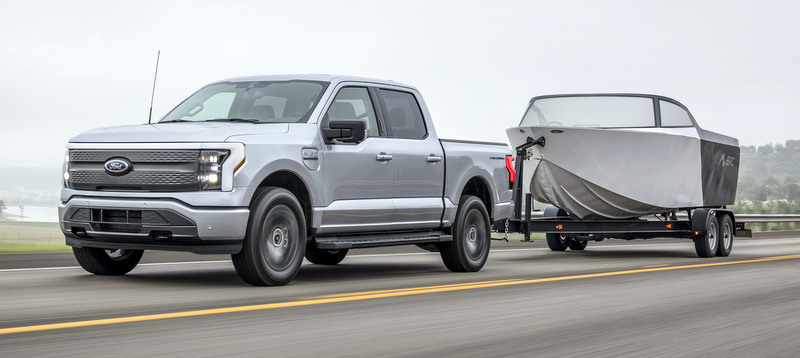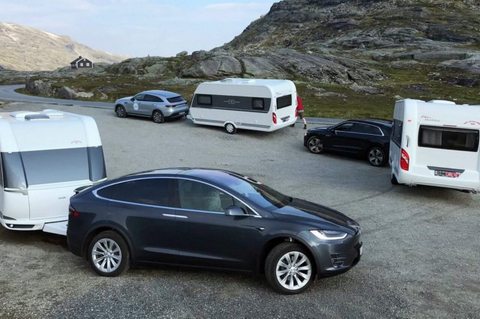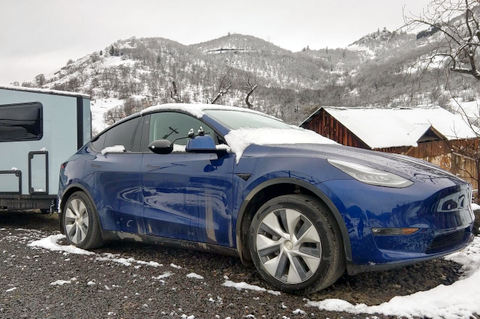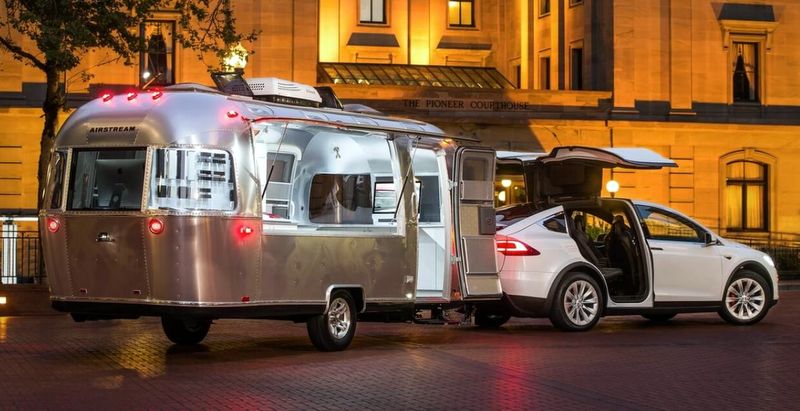EVs Aren’t Good at Towing. What’s the Solution?
The Why & How To Help of EV Towing
Many drivers agree that EVs are the way of the future, but they have their limitations. One of these limitations is towing. When you imagine hauling cargo, you likely think of a Toyota Tacoma instead of a Tesla.
So, why are EVs bad at towing? Here’s a guide on EV towing and what automakers can do to address the issue.

Why Aren’t EVs Good at Towing?
EVs can tow cargo on the road, but it’s not advisable. Their design (except for the Ford Lightning and other electric truck competitors) isn’t conducive to carrying a gooseneck trailer on the highway for 100 miles. Here are three reasons why they’re not good at towing.
1. Drained Batteries

EVs primarily struggle because towing drains the batteries they rely on for power. Internal combustion engine (ICE) vehicles lose efficiency when they tow by getting fewer miles per gallon (mpg), but the loss is worse for EVs.
These cars rely on battery-electric engines as their motor, which must work harder to carry the excess weight.
2. Limited Range
Towing limits how far EV owners can drive their vehicles, and it doesn’t help when the range is already limited. The newest EV models are expanding how far users can take these cars, but they still lag behind ICE cars. A Bloomberg report shows the average range of an EV reached 291 miles in 2022.
The average range for a gasoline vehicle eclipses 400 miles, so there is still a significant gap.
3. Overheating
Another issue EVs have to deal with is potential overheating. Towing strains the motors, generating more heat than desired inside the motor. Electric motors generally don’t emit much heat, but towing causes heat buildup and thermal management issues that compromise the vehicle’s efficiency.
What Can Fix the Issue?
EVs are a suboptimal choice for towing—but it may be the only option for some drivers. Here are ways to fix the EV towing issue.

1. Trailer Powertrains
One proposal is to take advantage of trailers and install powertrains inside them. Gooseneck trailers will sometimes transport loads between 14,000 and 25,000 pounds, so using a homegrown powertrain would significantly help the cause.
Lightship Energy, a tech startup, has developed a trailer that propels itself, reducing the burden on the towing vehicle. Optimally, you’ll have a car and trailer with identical ranges to keep them in lockstep when towing.
2. EV Powertrains
Another way to help towing capacity is to increase the capacity of EV powertrains themselves. Strengthening EVs and expanding their range will lessen the burden when towing reduces their efficiency. Getting to the level of ICE vehicles would even the playing field between the two.
3. Improving Efficiency
Overheating is a significant issue with EVs and towing, so automakers can enhance towing capacities by improving car cooling management systems. EVs don’t produce much heat, so strengthening the cooling systems would reduce the adverse effects of towing.
Another way manufacturers can improve efficiency is to develop aerodynamic systems. Reducing drag or changing the vehicle’s shape would help aerodynamic efficiency and airflow. Minimizing drag while towing would reduce the energy lost.

Fixing the EV Towing Problem
EVs have evolved with better range and tech features to enhance your driving experience. One area where EVs lack is towing because of its effect on batteries. That said, the auto industry has the potential to significantly transform if EV towing capacity catches up to ICE towing.

1 thought on “EVs Aren’t Good at Towing. What’s the Solution?”